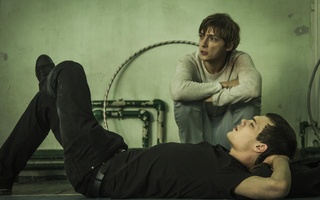Students in “The Empire Strikes Back: Science Fiction, Religion, and Society,” a joint History of Science and Divinity School class, gathered together to watch the course’s namesake film on Monday night. This screening was the first in a film series designed to run alongside the course.
The most recent lectures in the course have been focused on the “Golden Age of Science Fiction,” said Sophia Roosth, associate professor of the History of Science. She said the “The Empire Strikes Back,” the second film in the Star Wars series, connects strongly with the idea of the cowboy space epic, portraying the American frontier in outer space.
“The idea behind the course is to think of science and science fiction as sharing a sort of rhetoric,” she said. “One of the things that science fiction allows us to think about is how we can understand present circumstances by placing them in future contexts.”{shortcode-8b714c470a6341f07969ddd88768e111cf29a9f0}
She, along with Ahmed Ragab, assistant professor of Science and Religion at the Divinity School, who also teaches the class, said they assumed this was a movie many students had already seen. But while the screening started off with fewer than 20 students, many more members of the 70-person class streamed in and out as the movie progressed.
Ragab said the movie captures the relationship between science and religion that the course explores, with features like “the force,” which represents an alternative way of dealing with and understanding the world in the film.
Divinity School student Al-Jawhara H. Al-Thani pointed to the question of technological might versus natural forces as a theme of the course that the film also poses.
Al-Thani, as well as Finn H. Quigley, another graduate student, said they grew up watching Star Wars and enjoyed the reminder of their childhood.
“It’s definitely not something you would normally find in any kind of academic institution, and I like that,” Quigley said. “The professors are fantastic—both are very knowledgeable and interested in the subject.”
Ragab said part of their approach is keeping the class fun for the students as well as for the instructors. He also said teaching the history of science and religion through investigation of science fiction is meant to develop the students’ critical thinking.
“Cultural artifacts around us are not to be rejected but to be understood and analyzed,” Ragab said. “There is nothing shameful about being a fan of anything in pop culture.”
Read more in College News
With a New Budget and Events, Dunster Ups BGLTQ SupportRecommended Articles
-
Government Luminaries Speak on TocquevilleThe relevance today of Alexis de Tocqueville's thoughts on democracy and American political life 170 years ago was dicussed by
-
Panel Disagrees on 'Commitment' Of Faculty in 'Secular' University"There should be no official University policy in regard to religion," Jerome S. Bruner, professor of Psychology, said last night
-
Divinity School To Launch New EdX Course on ScripturesThe class, which will be taught by six faculty members and focus on the texts of the world’s major religions, will premiere this spring through edX, the non-profit MOOC provider that Harvard and MIT founded in 2012.
-
 'The Student' Thrills and Enlightens
'The Student' Thrills and Enlightens -
Nieman Fellow Delves Into Difficulties of Reporting on ReligionWashington Post religion journalist and current Nieman fellow Michelle Boorstein described the difficulties journalists who report on religion face.













